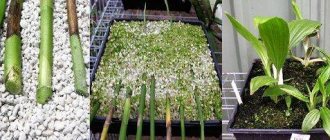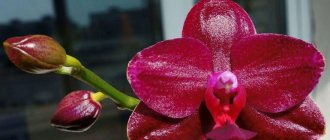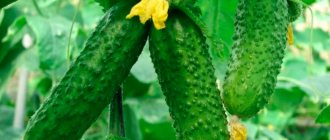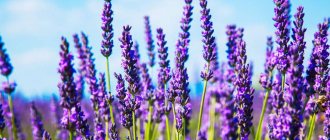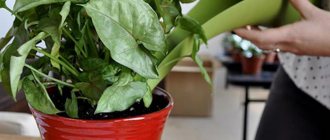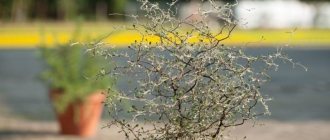What can you say about Pioneer sunflowers? First of all, we note that Pioneer is the name of an American company that supplies the market with new varieties of agricultural crops, including sunflowers. The company has been operating since 1926. During this time, its specialists have created several varieties of oilseed crops, which have both common features and some differences.
As you know, sunflower is mainly grown to produce oil; this quality of varieties and hybrids was given special attention during breeding. As a result, biologists were able to develop varieties with a high oil content, which can reach 50-60%.
In addition, breeders tried to select plants with well-developed parameters for yield, resistance to diseases, drought and other unfavorable climate conditions.
In terms of ripening time, varieties of the Pioneer variety can be early ripening, ripening in 80-90 days; early, ripening in 100-115 days; average, their ripening period lasts up to 125 days. Early-ripening varieties have a yield of up to 30 centners per hectare, mid-ripening ones can produce up to 40 centners per hectare.
Pioneer sunflower varieties and hybrids are known all over the world; in Russia they have taken root due to their good adaptation to the Russian continental climate and undemanding soil conditions. All of them give a good harvest with minimal costs for care and cultivation.
Experts say that the highest yield of Pioneer sunflower hybrids can be achieved by changing the density of crops. Thus, in dry areas with little rainfall, it is recommended to sow up to 50 thousand seeds per 1 hectare of area. In areas with sufficient rainfall and moisture, the density can be increased to 55-58 thousand per hectare.
Pioneer PR64A83
The most popular hybrid in Russia is the Pioneer PR64A83. Farmers prefer it for its stable, high yield, resistance to lodging, disease and drought. The stem of the plants is quite high - up to 170 cm, the root is strong, taproot, the basket with fruits is about 20 cm in diameter. In terms of ripening time, the hybrid is mid-season, the harvest can be harvested 3.5-4 months after sowing, but fully ripened seeds hold tightly in in their nests without crumbling. The seeds are large, dense, black, and contain about 49-50% oil. 1 thousand grains weighs 60 grams.
Popular sunflower hybrids
Sunflower hybrids differ from each other not only in characteristics, but also in the timing of breeding . Worthy samples can be found in both old and new selections.
Due to the armor layer, the seeds of sunflower hybrids are reliably protected from pests
Many companies developing new varieties apply the latest scientific advances in their activities and actively use various quality control measures for their hybrids.
The following classification of sunflower is common among specialists::
- Early ripening varieties , the ripening period of which is only 80-90 days, have lower yield and oil content than plants belonging to other groups;
- Early ripening - the ripening period of these varieties is 100 days. This group has the highest oil content, equal to 55%. 3 tons of crop are harvested from one hectare;
- Mid-season varieties ripen on average in 110-115 days. They boast the best yield (up to 4 tons of crop can be harvested from one hectare) and good oil content - 49-54%.
Global producers of hybrid sunflowers have been successfully operating in this area for many years and are actively developing along with their products, which are gradually improving and becoming practically invulnerable.
Pioneer
For the first time, Pioneer brand sunflowers appeared on the market at the beginning of the 20th century. Due to its high yield, resistance to diseases, mechanical damage, drought and the ability to grow in different climatic conditions, it is rapidly gaining popularity today.
The following varieties belonging to this group are especially popular:
PR62A91RM29
A hybrid whose growing season lasts 85-90 days. In warm climates, the height of the stem is 1.1-1.25 meters, and in cold areas this figure is 1.4-1.6 meters . The variety is highly resistant to lodging and uses soil moisture quite economically. Early fruit ripening will be a profitable solution for an entrepreneur.
PR63A90RM40
The fruit ripening period is 105-110 days. The sunflower is tall, its length can reach 170 centimeters . The basket, with a diameter of 17 centimeters, has a convex shape. The variety is resistant to lodging and has immunity to most diseases. The plant can self-pollinate. Another positive feature is that a stable harvest does not crumble even when ripe.
PR64A89RM48
On average, the growing season lasts 120-125 days. The stem, growing up to 2 meters in length, is well leafy, the basket is quite large, its diameter is 20 centimeters . The variety, resistant to lodging and drought, firmly holds its place thanks to its powerful root system. The abundant harvest has high oil content.
PR64A83
Fruit ripening occurs in 115-120 days. The diameter of the basket is 18 centimeters, the stem grows up to 1.8 meters in length . The hybrid is resistant to lodging, drought, and disease. Ripe seeds do not fall off. The plant is capable of self-pollinating and growing in harsh climatic conditions.
PR64A15RM41
This hybrid is considered a new product; its ripening period is 107-112 days. The stem reaches a height of 170 centimeters, the basket is regular in shape, round, of medium size . The plant is not prone to lodging and shedding, and is immune to common diseases. The variety produces a large amount of harvest, and the fruits are characterized by high oil content.
PR64Х32RM43
A hybrid of recent selection. The growing season lasts 108-110 days. The stem is tall (up to 185 centimeters in length), the basket is medium-sized, round and flat, but with a large number of seeds inside. The variety is self-pollinating and is not afraid of diseases and drought . The harvested fruit contains a lot of oils and oleic acid.
Syngenta
Sunflowers produced by the Syngenta label have long gained popularity and recognition in the agricultural crops market. The company does not stand still and constantly produces new types of hybrids, endowed with a huge number of quality characteristics.
The following varieties of Syngenta sunflowers are in particular demand::
NK Rocky
This hybrid belongs to a moderately intensive species and has the highest yield among early ripening varieties. The plant is characterized by rapid growth in the initial stages, but in rainy weather the growing season may be delayed . The variety is resistant to many common sunflower diseases.
Casio
A distinctive feature of this hybrid will be the ability to grow on uncultivated and infertile soils. Vegetation begins early. Sunflower belongs to the extensive type , resistant to drought and many diseases except Phomopsis.
Opera PR
The harvest ripens in medium terms. The plant is an extensive type, drought-resistant, and tolerates cultivation in poor soils . The hybrid is flexible to the timing of sowing and is immune to many common diseases.
NK Kondi
The hybrid belongs to the mid-season group of intensive type and has extremely high yield. The plant is not afraid of drought and many diseases ; in the initial stages of development, increased growth energy is observed.
Arena PR
A mid-early hybrid belonging to the moderate-intensive type. Sunflower has good growth rates at the initial stage, is resistant to diseases and produces a good yield of seeds with an oil content of 48-50 percent . The plant does not tolerate thickening of crops and large amounts of nitrogen fertilizers.
NK Brio
This hybrid, which belongs to the intensive type and ripens in medium terms, boasts resistance to a large list of diseases. At the initial stage, slow growth rates are observed . By increasing soil fertility, the amount of harvest can be significantly increased.
Sumiko
Plant height is 150–170 cm (depending on moisture availability). The Sumiko variety is a high-intensity type that responds well to soil fertility and an increase in the level of agricultural technology . High level of tolerance to Phomopsis and Phomosis.
Pioneer PR62A91RA29
Hybrid Pioneer PR62A91RA29 is not large in size; the height of the stem ranges from 110 to 160 cm, depending on climatic conditions. The diameter of the fruit basket is 19-23 cm. This variety is considered early ripening, the harvest is harvested 2.5-3 months after sowing. In areas with a warm climate, this allows you to harvest 2 crops per season, and in short summer conditions, the crops have time to ripen well before the arrival of cold weather. In addition, the hybrid has excellent resistance to drought and lodging. Large seeds contain up to 52% oil.
Advantages and disadvantages of hybrid varieties
When choosing between varietal sunflowers and hybrids, you need to weigh all the advantages and disadvantages of artificially bred plants:
- Uniform and almost 100 percent germination of seeds ;
- Large amount of harvested crops ;
- Stability and constancy;
- Excellent taste and oil content;
- Resistance to drought and unpredictable weather events;
- Immunity to most diseases;
- Possibility of growing in harsh climatic conditions .
- High price of planting material.
Hybrid sunflowers are in many ways superior to their varietal relatives. Growing them is much more profitable and profitable because in many cases, when varietal plants fail, hybrids continue to grow and produce a good harvest.
Pioneer P64NE118
Hybrid Pioneer P64NE118 is new for 2016. It is mid-season, the growing season lasts 115-118 days. The average height of the stem is 160-170 cm, the diameter of the basket is up to 24 cm. The seeds are large, dense, oil content is about 52%. Productivity depends on agricultural practices and climate, averaging 50 centners per hectare. The hybrid is resistant to broomrape, downy mildew and lodging. The hybrid is also resistant to drought, which allows it to be grown in steppe and forest-steppe climatic zones, in fields without irrigation.
What are the disadvantages of sunflower as a predecessor in crop rotation?
Despite a number of obvious advantages of sunflower, it is important to remember the disadvantages of the crop. First of all, the plant greatly depletes the soil, which significantly reduces the yield of subsequent crops.
Thus, to form a ton of seeds and plant stems, at least 40 kg of nitrogen, 15 kg of phosphorus and more than 100 kg of potassium and related microelements must be supplied from the soil.
At the same time, the absorption of useful elements occurs unevenly. Thus, during the first growing season, only 15% of nitrogen and 10% of potassium and phosphorus are absorbed. The consumption of elements is reduced only after the basket is formed.
Pioneer PR63A90RM40
Hybrid Pioneer PR63A90РМ40 is mid-season, ripens in 110 days. The stem is tall, up to 175 cm, the basket is convex, with a diameter of 15-18 cm. The seeds are black-gray, large, containing 52-56% oil. The hybrid has good immunity to Phomopsis, broomrape and sclerotinia, but can be damaged by thistle. It is characterized by good yield, resistance to lodging and shedding of ripe seeds.
Sunflower seeds – what can you expect from them and why choose
It is no secret that a sowing unit (number of seeds per 2.2 hectares) of a foreign hybrid costs 7-15 thousand rubles, while a sowing unit of domestically selected sunflower costs no more than 5 thousand rubles. Why is the consumer overpaying such a huge amount? Will the seeds pay for themselves or is it money thrown away? Let’s take a closer look at what foreign “flowers of the sun” are capable of and calculate the benefits.
- Increased productivity. It cannot be said unequivocally that some produce a lot, others little, but when tested in many breeding areas throughout Russia, the performance of foreign seeds is much higher. On average, the tonnage is 18-23% higher than in the same area from domestic hybrids, and the care for them has always been the same. What does this mean in money? The average sunflower yield in the temperate climate zone of Russia is 19 c/ha, that is, 1.9 tons per hectare. We add 21% (the average percentage is between 18 and 23%) and we get 2.4 tons. 0.5 tons more, but at the current price (an average of 13,500 rubles per ton) this is: 13,500:2 = 6,750 rubles. Thus, using a foreign seed unit, we earn approximately 6,750 rubles . In fact, this is already 6750 + 5000 (price per seed unit of domestic selection) = 11750 rubles, that is, the price of high-quality material of foreign selection.
- Maslenitsa. It has long been a known fact that our sunflower seeds contain up to 38-42% oil, while their opponents contain up to 48%. This is significantly reflected in the price that is given for them at the oil mill. About 1000 rubles more expensive, which is +5-7% to the cost of the harvest. Theoretically, this is not much, but adding this amount, we get about 16-17 thousand per sowing unit, that is, this is already the cost of the best American hybrids.
- Good seed similarity and rapid development. It would seem that this factor will not at all affect the financial condition of the owner of such a plant, but if you take a closer look... On average, during the period of growing “sunny flowers”, it is necessary to do 2 weedings and 1 hilling, and this is far from cheap, especially at current prices for diesel fuel. Sunflower seeds of foreign selection have already brought profit, despite their seemingly astronomical price.
- Excellent sorting on the vibrating table. If sunflower seeds are brought from the USA, England or Holland, you will immediately notice the difference - the plants are extremely straight, the hats are bent to one side, and they are all the same in height. This makes it possible to reduce losses during harvesting using mechanized means by 4-5%. If you select them manually, then there is no difference, but if you select them with a combine, this is another +5% to the harvest.
- Foreign confectionery white sunflower seeds are huge in size and are sold at half the price from the field than the usual Lakomka or Almaz, which Russian farmers and gardeners are accustomed to planting. The benefits are obvious, especially considering the prices of confectionery hybrids.
As you can see, it makes sense to overpay for foreign seeds, exactly the same as paying more for high-quality hybrids of Russian selection, instead of using the usual “rowing”.
As for the yield, if you come across a good sunflower seed, you can safely count on 25 c/ha, and you don’t need much for this. Just plant it in time and, if possible, water the plant when it is knee-high. If you provide excellent conditions for growth, such as in a selection plot, then you can get 45-50 kg from one hundred square meters. In the USA in 2013, for example, Pioneer sunflower seeds showed the highest yield of 85 c/ha, and this became a record! Before this, in Holland, yields of 65-70 c/ha were grown, and such indicators were obtained in many breeding plots.
Pioneer PR64A89RM48
Hybrid Pioneer PR64A89RM48 matures in 120-125 days. This is a tall plant, its stem stretches up to 2-2.3 meters. The basket is large, with a diameter of more than 20 cm. The seeds are also not small, the oil content in them is up to 55%. Due to the strong root system, the stems are held straight and are resistant to lodging. Strong immunity protects the plant from typical diseases and insect pests.
Benefits of growing sunflowers
The main feature of growing sunflowers is its unpretentiousness. There is no need to buy new expensive equipment. Traditional technologies are quite suitable.
However, it is important to remember some agrotechnical features that need to be taken into account. Thus, the most favorable substrate for growing plants is chernozems or meadow-chernozem soils. A few more important points are the slightly alkaline reaction and loamy mechanical composition.
Sunflower has a powerful root and can feed on water that is inaccessible to other plants. At the same time, soil moisture is an important component of high yields. Adequate moisture is especially important during the growing season.
It is thanks to its high drought resistance that sunflowers are ideal for growing in dry regions.

